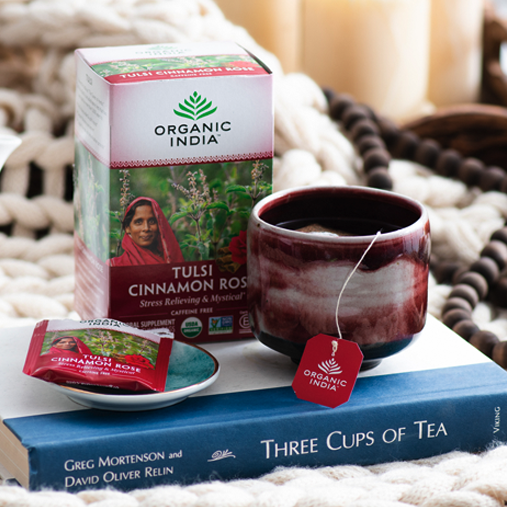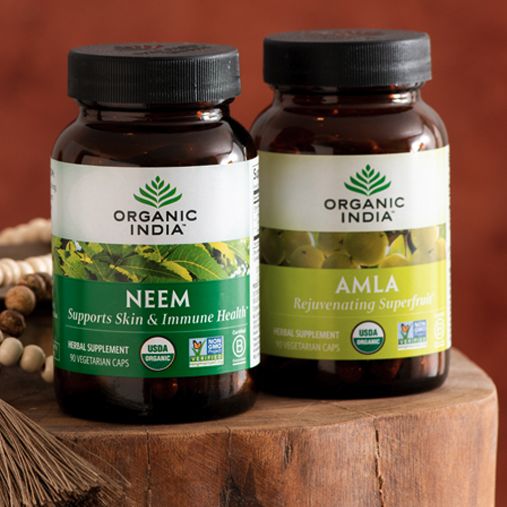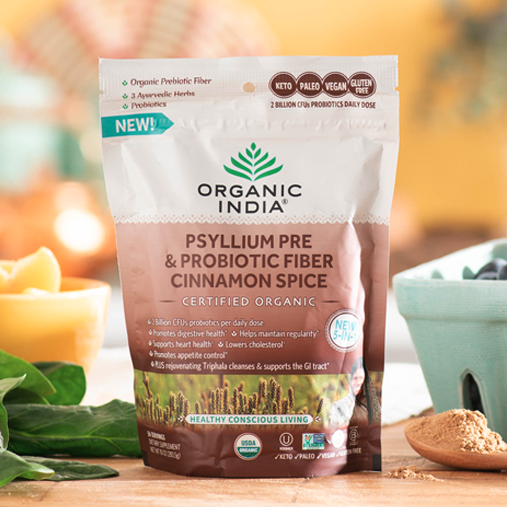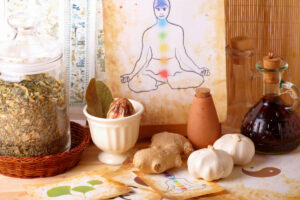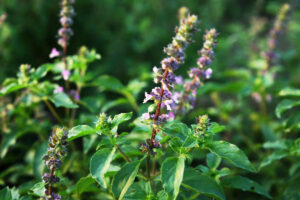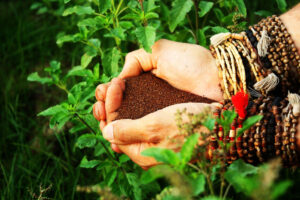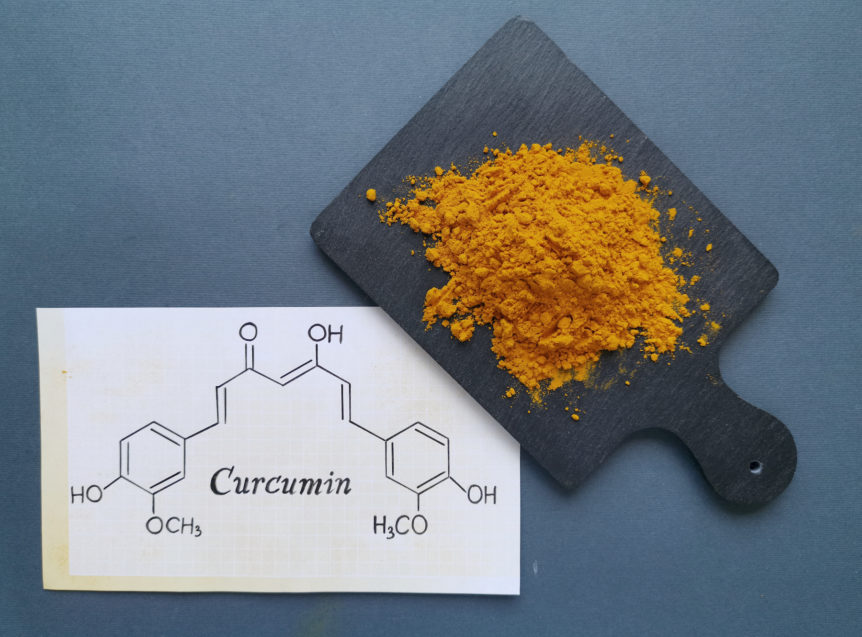Back
Turmeric’s history stretches back through at least four thousand years, first recorded in the East and then making its way westward. First uses were recorded as part of India’s Vedic culture, which used (and still use) the plant both as a culinary spice and as a religious artifact in ceremonies. Sanskrit medical treatises mention turmeric as a healing plant, with Susruta’s Ayurvedic Compendium (250 B.C.E.) referring to it as an essential ointment ingredient for relieving the effects of food poisoning. More than two thousand years later, turmeric turned up in China; and then in another hundred years, in East Africa. In 1280, Marco Polo mentioned turmeric as a vegetable that exhibited qualities similar to saffron. By the 1700s, the turmeric herb had made its way to the New World and was introduced to the island of Jamaica. And now, millennia later, modern science is busy elucidating the many nutritional and healing properties of this well-known marvel of the plant kingdom.
Turmeric: An Ayurvedic Staple
If there were such a thing as a heroic figure in the plant world, turmeric would fit the bill. The herb has been showered with accolades, blessings, and princely monikers by those who know it best. Because it has such a long history, turmeric goes by different names in cultures throughout the world, and the name it’s most commonly referred to as actually derives from the Latin words terra merita, meaning meritorious earth — a reference to its golden-copper color that resembles a mineral pigment. However, in many cultures, the name for turmeric comes from the Latin word curcuma — and from this root we get curcumin, one of the plant’s most illustrious ingredients.
Like Ayurvedic doctors, modern scientific researchers have found turmeric to be astounding in its usefulness and multitude of applications.
Herbal researchers note that in Sanskrit, turmeric has at least 53 different names, including auspicious, lucky, plenty, long in appearance, that which produces good odor, dear to Hari (Lord Krishna), gracious, beautiful as moonlight, killer of poison, and that which gives delight to the heart. The most modern descriptions fall into the categories of anti-inflammatory, digestive aide, immune booster, and multipurpose herbal medicine.
Like Ayurvedic doctors, modern scientific researchers have found turmeric to be astounding in its usefulness and multitude of applications. Its benefits span from attending to mild conditions to more chronic and severe illnesses. Turmeric is used for the skin, appetite, hormonal irregularities, digestive issues, pain, and liver cleanses. Scientists have included a wide range of diseases upon which turmeric has a curative effect. In more general terms, it is beneficial for wounds, inflammation, bacteria, fungi, viruses, infections, injuries, and swelling. And, it has no adverse interactions (contraindications) with prescription medications, as mentioned in the monographs of the German regulatory authority, Commission E.
Scientific researchers Sahdeo Prasad and Bharat Aggarwal note that traditional Ayurvedic healers of India have used turmeric to strengthen the overall energy of the body, relieving gas, dispelling worms, improving digestion, regulating menstruation, dissolving gallstones, and relieving arthritis. Because of the plant’s versatility, it is used both as a preventive, as well as a healing herb.
Turmeric’s Active Ingredients
The methodology of modern science includes a focus upon the parts rather than the whole. This dissection lies in stark contrast to the worldview of Ayurveda, which considers the full spectrum of existence in the scope of health and healing — from consciousness to every expression of life. In simpler terms, science is all about reductionism, while Ayurveda is about holism. Ayurveda takes into consideration not just a plant and its constituents, but also the seasons, the patient’s dosha, the environment, relationships, mental and emotional states, a patient’s dietary and other habits, and spiritual practices. On the other hand, modern medicine concentrates mainly on what specific chemicals make an herb into a viable medicine. When it comes to turmeric, scientists note that the answer is one particular constituent called curcumini (as aforementioned).
In the peer-reviewed scientific journal Cellular and Molecular Life Sciences, scientists explain that curcumin is the active ingredient in turmeric that offers “a surprisingly wide range of beneficial properties.” The multiple effects of curcumin upon the genes are related to its complex chemistry and its ability to influence multiple signaling pathways, including survival pathways and the growth factor of the cells. Curcumin scavenges free radicals (cellular oxygen robbers) to protect cells from damage, while also donating hydrogen to enable important chemical reactions to take place. Curcumin is said to offer great promise as a therapeutic agent, and is currently in clinical trials for a variety of health conditions that affect nearly every system of the body. This scientific revelation is hardly news to the Ayurvedic tradition.
New Findings Confirms Ancient Knowledge
Curiously, following thousands of years of successful harvesting and medicinal use, it is only recently that modern medicine has caught wind of turmeric’s healing capacity. Over the past few decades, the plant has become commonly used by natural and complementary doctors, eventually drawing the attention of the scientific community. But it is the opinion of many, if not most, Ayurvedic healers that unless plants are regarded within the holism of life, then their power and potential shall always remain hidden from the reductionist view of modern science. This is because, as one researcher explained, Ayurveda is not a single molecule-based therapeutic intervention. In the same way that an arm or a foot has no use without the body, a particular chemical within a plant lacks the wholeness of the entire plant, as well all the other factors that are present in the healing picture, including the environment, emotions, mental stress, nutritional status, and so on. The whole plant carries the secret to healing, and not merely the scientifically isolated active ingredients. Take advantage of the benefits of turmeric by taking organic turmeric capsules or incorporate the herb into your favorite dishes for a delicious, healthy spice.

